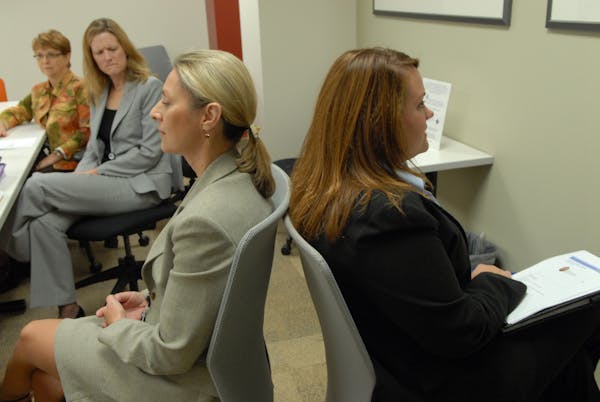Minnesotans are paying significantly more out-of-pocket for their health care, and it seems to be having the intended effect -- demand for medical care is slowing down
But that may not be all good.
In 2007 medical spending on those enrolled in private health care plans rose by 5.6 percent to $4,095, on average, the smallest increase in a decade, according to a state report released Tuesday.
At the same time, however, out-of-pocket costs for individuals surged by nearly 14 percent, the highest increase since 2002. Last year, enrollees paid more than 15 percent of total health care costs, up from just over 10 percent in 2000.
The annual report by the Minnesota Department of Health tracks spending in the private health plan market, which covers two-thirds of insured Minnesotans.
It said that higher costs imposed on consumers through high deductibles and copays likely contributed to slower growth in medical claims. Other efforts such as disease prevention and management may also have played a part.
"It's too soon to say if it's a trend or how much is related to cost control," said Julie Sonier, director of the health economics program at the Minnesota Department of Health.
The report provides the most complete picture of health care trends in the state because it draws from actual health plan data, rather than surveys of employers and employees. The rising costs for consumers is driven mainly by their employers' efforts to cut costs.
It also tests the theory that consumers will be more careful about using medical care if they are paying more for it. But some experts worry that they will scrimp on needed care, leading to even more expensive hospitalizations down the road.
Sonier said the sharp rise in consumer costs is a concern.
It's not possible to tell if people are forgoing unnecessary care or doing without appropriate care because they don't have the money to pay.
The report also questioned how much longer consumers can continue to pay ever higher medical costs, given higher food and fuel prices and falling housing values.
Roger Feldman, a health economist at the University of Minnesota, said previous research has shown that high deductibles cause people to spend significantly less.
"Employees are paying more out-of-pocket, and that is cost-shifting but it is also cost-reducing," said Feldman, who was not involved in preparing the Health Department report.
As in previous years, hospital costs, both inpatient and outpatient, as well as physician costs accounted for two-thirds of all spending. Inpatient costs rose by 9.7 percent between 2005 and 2007; physician costs went up by 8.1 percent.
Medical premiums rose 8.4 percent in 2007, more than the 5.6 percent increase in total medical spending because of the lag in the insurance cycle.
That suggests premium growth may slow in the next couple of years, Sonier said.
Chen May Yee • 612-673-7434
